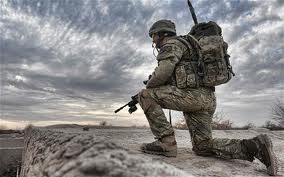Conflict, Literature, and Advertising
Wednesday 13 November 2013
 The IB, in its mission statement, aims to create a better and more peaceful world. Who would argue with that? At the same time, some schools – IB schools – offer, as part of their co-curricular activities, an opportunity for students to participate in ‘cadet forces’; these are organisations which, presumably, give students a taste of life in the armed services. Before you wonder, this blog post is not the prelude to a shameless, right-on, anti-establishment diatribe. Instead, consider it an observation. It may or may not be adversative to promote peace on the one hand, and military life on the other.
The IB, in its mission statement, aims to create a better and more peaceful world. Who would argue with that? At the same time, some schools – IB schools – offer, as part of their co-curricular activities, an opportunity for students to participate in ‘cadet forces’; these are organisations which, presumably, give students a taste of life in the armed services. Before you wonder, this blog post is not the prelude to a shameless, right-on, anti-establishment diatribe. Instead, consider it an observation. It may or may not be adversative to promote peace on the one hand, and military life on the other.
This post is written a few days after Armistice Day. English teachers may have marked the day in the teaching of the poignant poetry of Siegfried Sassoon or Wilfred Owen. If you are teaching war literature, or advertising for that matter, you may like to watch with your class this recent short documentary film made available in The Guardian newspaper. The film is strongly critical of Britain’s recruitment of minors into its armed forces. For the teacher of Language and Literature, the film includes an interesting discussion of the advertising strategies used to persuade young people and their parents to the benefits of a military career. The film is moving and compelling. But, like any text, it has a bias all of its own.
Conflict, of course, comes in many forms, and isn’t confined to battlefields. In Peru, writing has become a spectator sport in which writers duel in front of a live audience in a form of literary skirmish. You can’t make this stuff up.
Should you wish to write a review for this website of a book or other resource you find helpful in teaching Language and Literature, please drop me a line with your idea. Your review can be written entirely free of conflict or combat.

